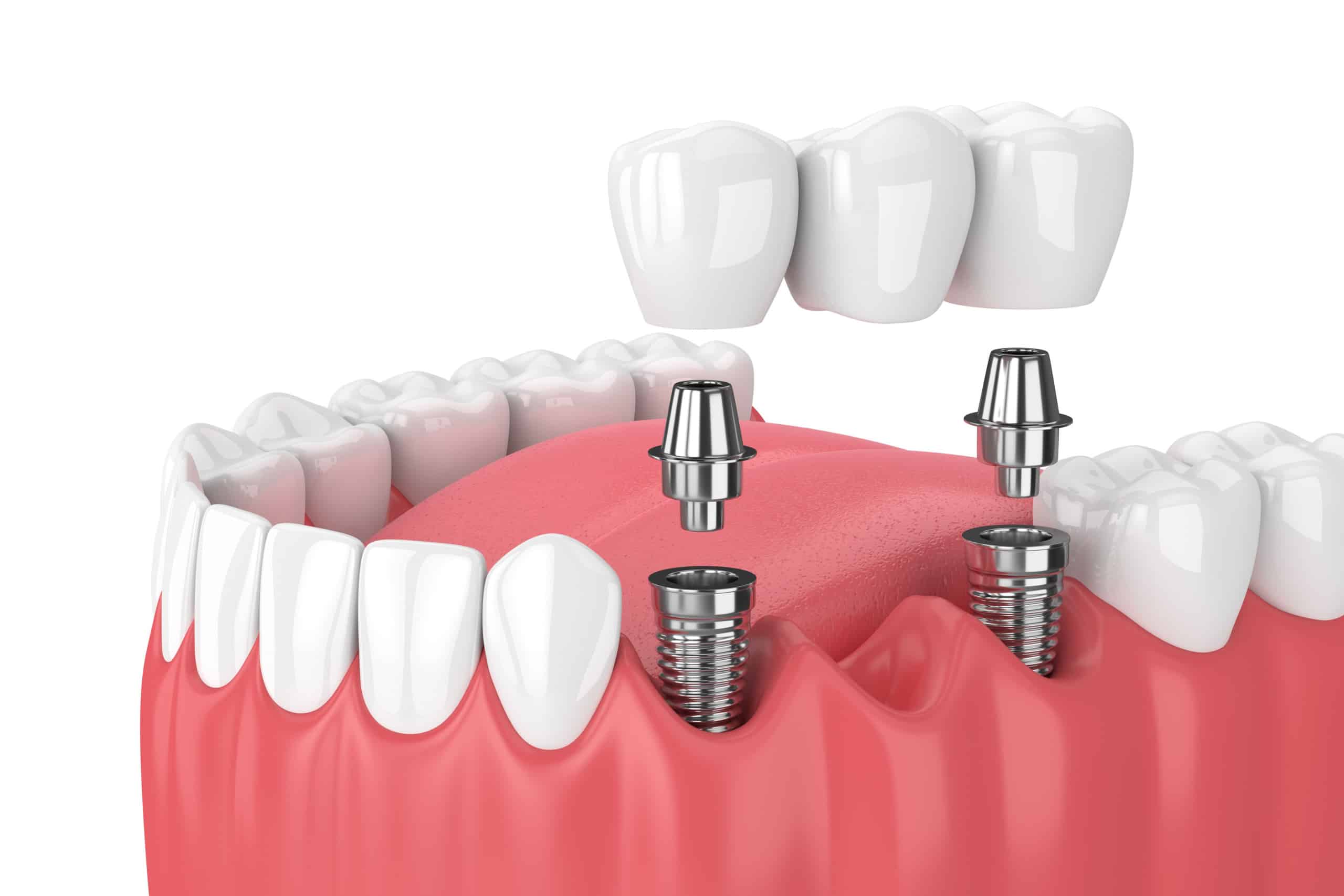Dental bridge is still one of the most common procedure to replace missing teeth, especially for those who is not a candidate for dental implants.
There are many bridge types-styles and options, available to remedy your dental needs relative to your specific oral conditions. The 3 most common types of dental bridges being used today: Conventional Bridges, Cantilever Bridges, and Maryland Bridges.
Traditional/Conventional Bridges – Most common type of dental bridge
Traditional dental bridges, also known as fixed dental bridges, are composed of between one and three replacement teeth that are custom crafted to blend seamlessly into the smile.
These teeth are connected to two dental crowns, on both on one side of the replacement teeth. When the crowns are attached to the teeth adjacent to the gap once occupied by the now-missing natural teeth, the replacement teeth will fill the gap, making the smile whole once again.
Traditional fixed dental bridges offer several benefits:
- By filling the gap between natural teeth, a bridge prevents those teeth from shifting out of their optimal positions toward the gap, which would result in bite problems.
- Our dentists created their bridges from the highest-quality porcelain and other materials to ensure the most natural appearance possible.
- Our traditional fixed bridges are strong and durable. With proper oral hygiene and regular visits to our practice, they can last 10 years or even longer.
However, the only disadvantage to traditional fixed dental bridges is that they use healthy natural teeth for support. These natural teeth must be filed in order to accommodate the dental crowns that anchor the bridge.
A traditional bridge can restore the function and aesthetics of your smile if you have lost one or more consecutive teeth. However, some patients do not qualify for a traditional bridge, which relies on (at least) two healthy teeth for support.
When there is only one tooth available to uphold a restoration, dentists often recommend a cantilever dental bridge. This restoration is comprised of one or more artificial teeth, known as pontics, and a single dental crown. If you are a candidate, a cantilever bridge can improve your bite, as well as your ability to eat and speak with confidence.
Cantilever Bridges
Cantilever vs. Traditional Bridges
Traditional bridges feature pontics flanked by two dental crowns, and they span the gap left by missing teeth. To secure the restoration, the dentist will need to sculpt neighboring teeth by removing a small portion of enamel. Though identical in function, cantilever bridges only require a single abutment tooth to be reshaped. The pontic will then project into the nearby space. Typically, dentists only use cantilever bridges to replace single missing teeth.
The Benefits of a Cantilever Bridge
Like traditional bridges, cantilever bridges can restore your bite and your ability to eat comfortably. They also enable those who would not otherwise qualify for a bridge to receive a fixed restoration. Replacing missing teeth can prevent other teeth from shifting and protect you from misalignment. Of course, bridges also have important cosmetic advantages. A complete smile can renew your confidence and encourage you to smile and laugh freely.
Maryland Bridges (Butterfly Bridges) – The least invasive dental bridge
Maryland bridges are considered a conservative alternative to traditional bridges. These bridges consist of a pontic that is held in place by a metal or porcelain framework. This framework is bonded onto the backs of the two teeth adjacent to the missing tooth. Since this type of bridge isn’t held in place by crowns, the adjacent teeth don’t need to be filed.
While Maryland bridges are more conservative than traditional bridges, they do have their downsides. The strength of the bridge is limited by the strength of the resin that holds it in place, so it may not stay in place in areas of the mouth where the teeth are subjected to a lot of biting force, like the molars.



